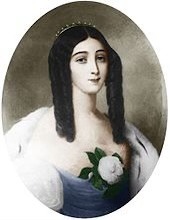APRIL: Camellias
- Swiss Miss
- Apr 20, 2023
- 3 min read
Updated: Jun 13, 2023


Camellias, magnolias, peonies and wisterias – I have noticed my fascination with flowers coming from China. A coincidence you think? Or in my blood? My maternal grandfather Tan Sing Bee is from Amoy (now Xiamen) China. There is something there, part of the identity quest of a TCK - to be unpacked at some stage.
Camellias even have a Philippine connection - the things you find out when you start reading about them! They’re named after an Austrian Jesuit named Georg Joseph Kamel (Camellus in Latin). He arrived in Manila 1688 and established the first pharmacy in the Philippines in San Ignacio, Intramuros. He had a keen interest in animals and plants and published Herbarium aliarumque stirpium in insula Luzone Philippinarum (Herbs and Medicinal Plants in the island of Luzon, Philippines).
Nearly 50 years after his death, Swedish botanist Carl Linné published his famous two-volume work Genera Plantarum (The Species of Plants) in 1753. In honour of the great scientific contributions of Georg Joseph Kamel, he named a flower “Camellia”.
Herbarium aliarumque stirpium in insula Luzone Philippinarum and "Georg Joseph Kamel, ‘Camellus. Drawings from the Philippine Islands’ Vol. I Sloane MS 4080:1686-1706, FOL. 39R.”
Camellias are also native to Japan, Korea, Indonesia and India. Camellias are evergreen flowering shrubs from the family Theaceae. Its leaves and leaf buds are used to produce tea. That’s right. Your tea is a flower!
Explorers to China and Japan were attracted to this evergreen shrub that bloomed in late winter. They called them Chinese roses and brought them back to Europe. The first documented living camellias were exhibited in England in 1739, in the greenhouses of Robert James, 8th Lord Petre.
First edition and 2013 edition
The popularity of camellias spread and by 1848, Alexandre Dumas fils, immortalised this flower in his novel La Dame aux Camélias. The semi-autobiographical novel was based on the author's brief love affair with a courtesan, Marie Duplessis. She wears a red camellia when she is menstruating and unavailable for sex and a white camellia when she is available to her lovers. Dumas adapted it for the stage in 1852 Italian composer Giuseppe Verdi put the story to music in the opera La Traviata.
Marie Duplessis and Sarah Bernhardt starred in the stage adaptation.

In English-speaking countries, La Dame aux Camélias became known as Camille and sixteen versions have been performed at Broadway theatres alone. There are numerous films adaptations. A ballet titled Marguerite and Armand by renowned choreographer Sir Frederick Ashton was created in 1963 for Rudolf Nureyev and prima ballerina assoluta Dame Margot Fonteyn. Another ballet was created by John Neumeier at the Staatstheater Stuttgart in 1978 with music by Frédéric Chopin.
Camellias are a symbol of longevity and faithfulness in Korea, making them a popular choice at weddings. But thanks to Dumas’ novel, they have come to symbolise desire and passion in Europe. And it seems luxury, too. The white camellia is most commonly associated with the House of Chanel. Coco Chanel was given her first bouquet of camellias by her polo-playing lover, Boy Capel. Its perfect symmetry and beauty attracted her to this flower. She started pinning silk versions to her lapels and her hair. The camellia flower is a motif that appears on Chanel packaging, bags, clothing, jewellery and shoes.
Coco Chanel and the Chanel Camellia
My Camellia, white of course and my neighbours’ red Camellia



















Comentários